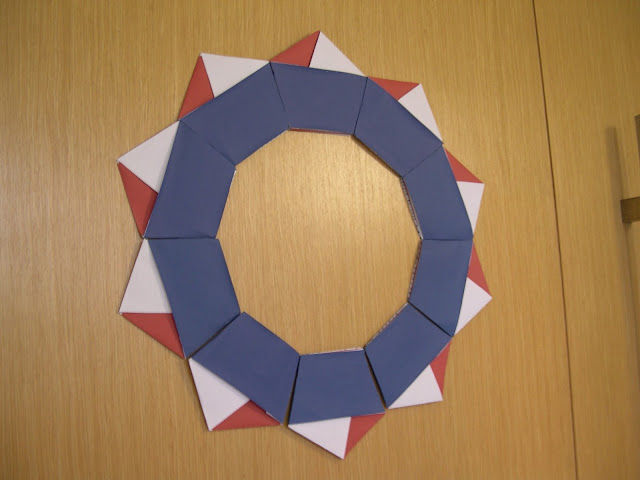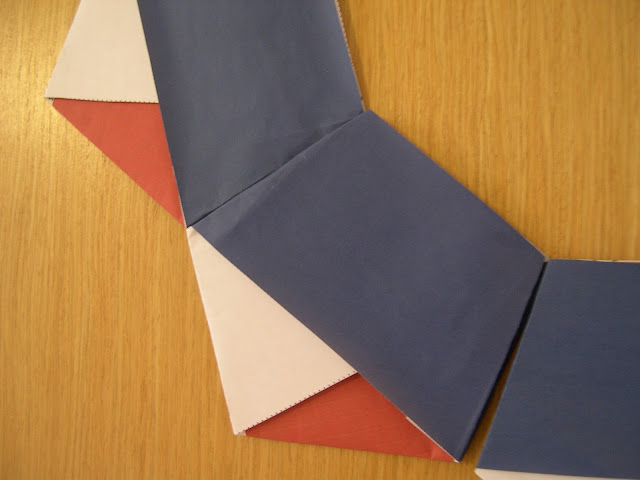You will need
12 sheets of paper,
the PDF download from below
a colour
printer,
a gluestick
some Blu-Tack or double sided tape.
Each folded knot is 3 5/8 inch in width and it makes a 13 inch wreath.
Each folded knot is 3 5/8 inch in width and it makes a 13 inch wreath.
I got the idea for the basic folded knot shape from a mathematics book
of all things. It was talking about model building and the shapes you can make
with paper. This one shape had so many possibilities. And it uses the same
techniques you would use in tying a knot.
Download the Tri-Colour wreath file below and print 10 copies of the pattern pages and cut out the shapes.
Glue the
pieces together. The angled end of the piece marked Tab 2, should be glued on
top of Tab 1. Match up the dotted lines to glue it accurately.
Similarly the
angled side of the piece with Tab 3 should be glued on top of Tab 2. The angled
side of the piece with no tab needs to be glued on top of Tab 3.
You should
get a long paper strip with three joins
Folding the
strip into the final shape is similar to tying a knot. Start by making a fold
at the second join on the strip using the dotted line as a guide. (The Arrow in the figure below points to the second join.)
Your strip of
folded paper should look like the inverted letter V.
Now bring the
next join to fold over one of the arms on the V and fold so that it looks like
the figure below. Make sure you get the V shape by matching the dotted line to the
corners and edge of the strip below.
You should
now have a loop with a short arm and a long arm. Make sure the long arm sits on
top of the short arm.
Now take the
end of the long arm and fold it under the short arm. Pull the strip through the
loop made by the crossing over of the short arm and long arm. Make sure you get
a nice tight folded knot.
Your first folded
knot is now ready.
Repeat until
you have 10 folded knots. Place out your ten folded knots and make
sure they are aligned the same ie. All the shapes have the red triangle on the
left and the white triangle on the right. You can do the reverse as well. Just
make sure all your folded knots are facing the right way.
Place a small
piece of Blu-Tack on the reverse of your folded knot and stick it onto the
place you want to decorate, eg window, door or wall.
Then arrange the second knot by placing it next to the first folded knot and match the adjacent blue corners together.
Continue doing so for the remaining knots and you will end up closing the circle and your wreath is complete.
Then arrange the second knot by placing it next to the first folded knot and match the adjacent blue corners together.
Continue doing so for the remaining knots and you will end up closing the circle and your wreath is complete.
And to all my American friends - have a great 4th of July holiday!































